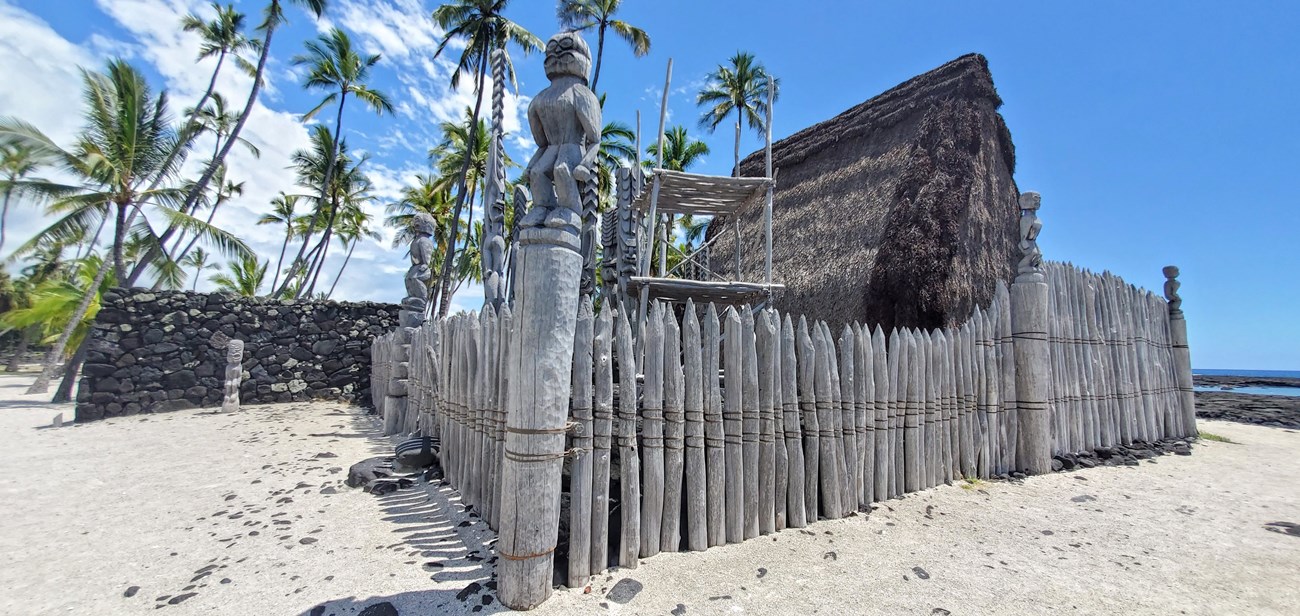Last updated: May 3, 2021
Article
Hawaiian Values: Hoʻolaʻa

Hoʻolaʻa instills the value of sacredness. It is to consecrate or dedicate and also to display devotion.
Upon his death, ruling chief Kalani Keaweʻīkekahialiʻiokamoku was made laʻa (sacred) by the cleaning of his bones with the waters of Keawewai. In placing them inside the Hale o Keawe, his bones were dedicated to the puʻuhonua, which thrived by his mana (spirit, power, and essence) long after his passing from the material plane.
This value of hoʻolaʻa is foundational across many cultural practices, from the traditions of hula (dance) and lua (martial arts), to craft forms such as kālai (carving) and ʻūlana (weaving), as well as the practices of lawaiʻa (fishing) and mahiʻai (cultivation). Hoʻolaʻa is displayed in the care and manner by which a person completes their work.
Today, Puʻuhonua o Hōnaunau serves as a place where cultural practitioners can continue to develop, learn, and share their practices, incorporating the value of hoʻolaʻa into their work.
